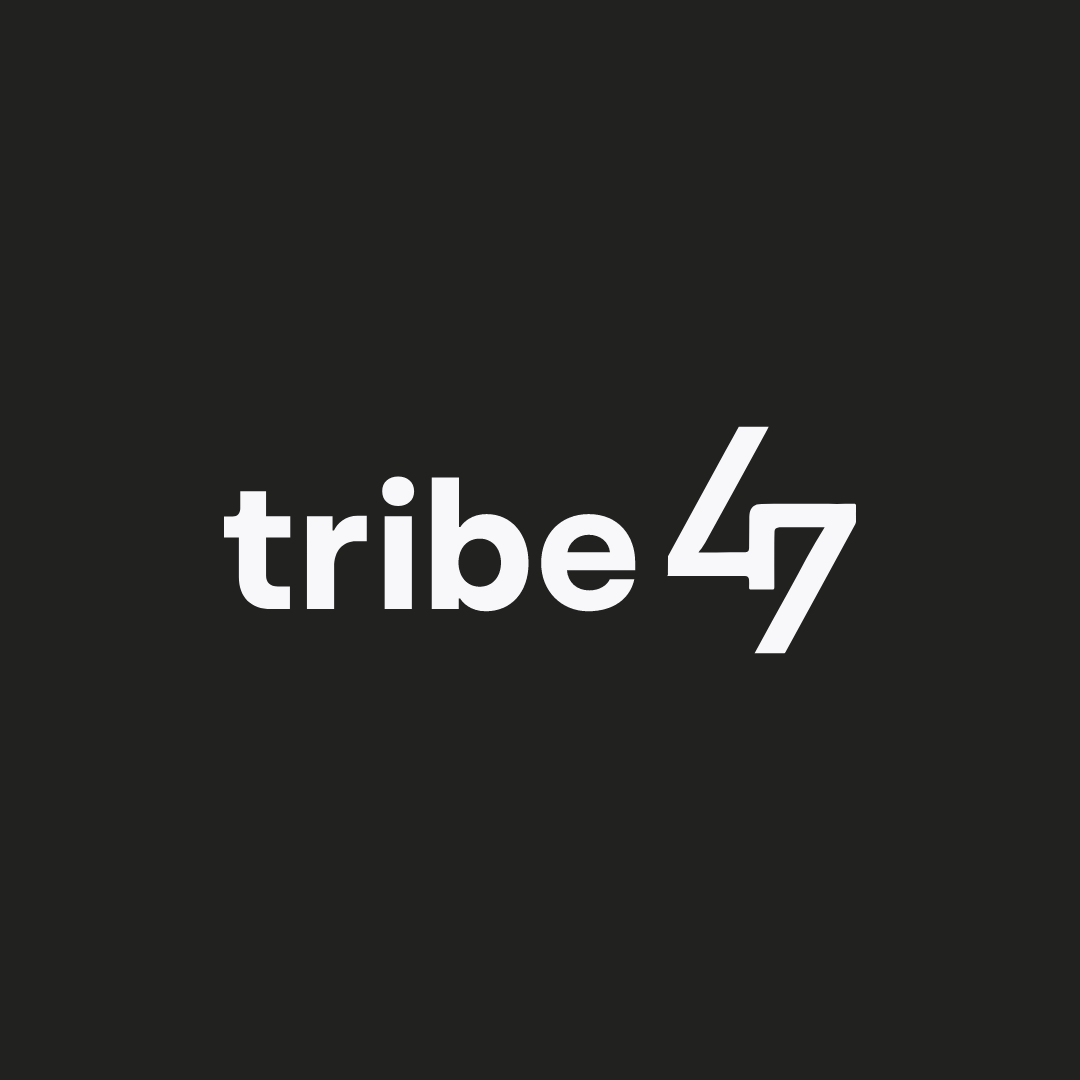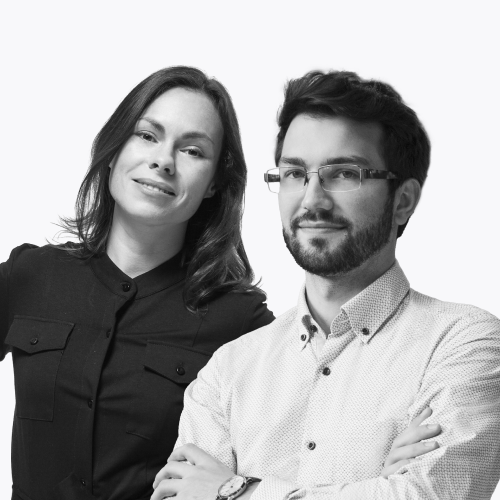Table of content
Not so long ago a paid traffic specialist’s ultimate dream was to run the coveted ad account of some well-established brand with a fat advertising budget. As advertisers, we thought that this was what true success looked like.
Determined to reach the top, we learned all the details of every advertising platform, schooled ourselves in targeting and ad formats, and mastered the fine art of splitting ad accounts into a gazillion ad sets. Then we waited impatiently for that next significant injection of cash.

Spending ever-increasing amounts of money on ads was exciting for a while but the rush didn’t last. What was supposed to be a creative and exciting marketing job somehow turned into spending way too many hours staring at a spreadsheet. And, it didn’t help that many of the most creative aspects of our advertising role were increasingly being fulfilled by people in other departments.
It wasn’t long before almost every paid traffic specialist we knew left the profession because they weren’t getting to carry out the juicy parts of marketing like building awareness and exploring the psychology behind what sells; they were JUST setting the ads.
But finally (and thankfully), our day as advertising specialists has arrived! Now we advertisers have the chance to shape the “real” marketing actions of a business and be the drivers of business growth and creators of success.

We can achieve all this by merging a company’s advertising into one manageable and highly effective process with just one powerful tool – the funnel. Let’s see how it works…
The funnel is a monumentally powerful tool to have in your armory and one that we folks at Tribe47 have used time and again with incredible results.
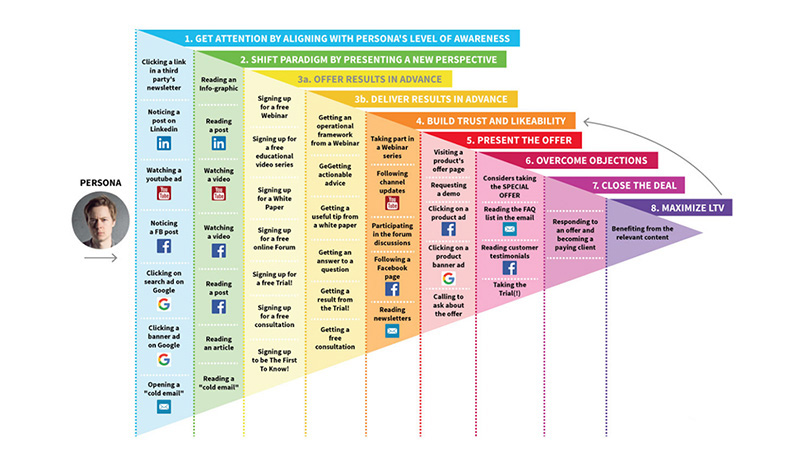
Choose the proper digital sales funnel and you can guide your online customers on a journey that starts with them first becoming aware of a product and ends with them making a purchase. In between, they will get to know your brand and come to feel an affinity with the community your products serve.
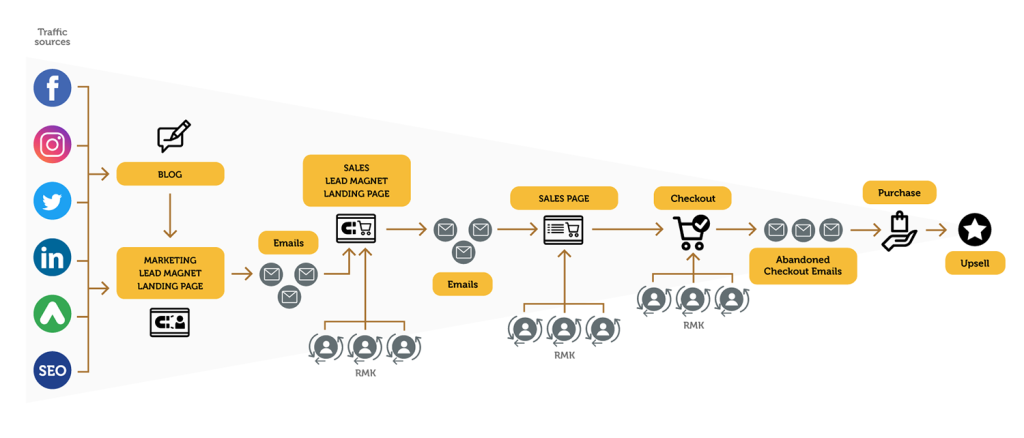
We didn’t just wake up one day and know how to build a kick-ass digital sales funnel – it was a gradual learning curve that began in the earliest days of online marketing. Back then, sales funnels only had a few basic stages (Traffic >> Sales >> Payment) and the only way to generate traffic was through paid advertising and SEO.

Funnel 2.0 brought with it a new level of sophistication. Lead acquisition and nurturing potential customers through content became more common. The funnel’s structure had a makeover and evolved into Traffic >> Lead Page >> Content >> Sales.
That was pretty good, but now, with Funnel 3.0, we have absolutely nailed it. This incarnation uses a content-centered approach that allows a message to cut through all that noise created by the constant flow of traditional ads to capture the interest of potential customers.
Funnel 3.0 consists of three main stages which we call ‘Top,’ ‘Middle’ and ‘Bottom.’ Each stage plays an essential part in producing a conversion (so skip one out at your peril!).
Is it smart? Yes. Does it let you, the advertising specialist, be creative and use your knowledge and insight? Most definitely. Do you want to build your own? Yeah, we thought you might!
Top of the Funnel
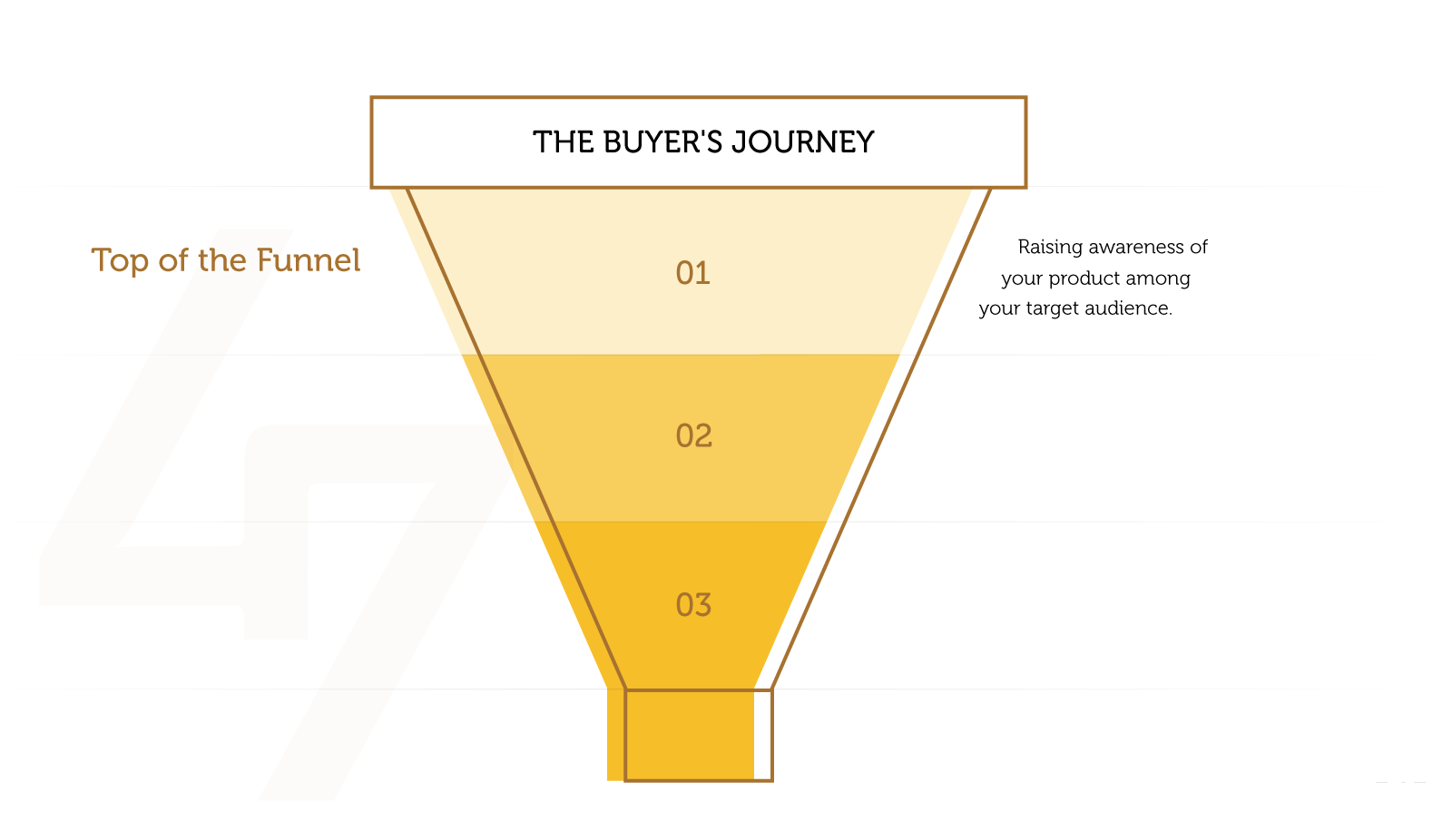
This stage of the funnel is all about raising awareness of your product among your target audience. One way to do this is with the paid promotion of your articles, blog posts, and those all-important educational ‘how-to’ videos on sites like Facebook, YouTube, Linkedin, Pinterest, Quora, and Reddit. Choose your promotional channels based on your product/service and where you think your audience will be looking for inspiration, materials, and instruction.
At the funnel’s top, we like to start by whetting the audience’s appetite for the end product with educational videos on related content that they can’t resist.
There is no set rule for creating educational content but the most commonly used copywriting formulas are probably BAB (Before – After – Bridge) or AIDA (Attention-Interest-Desire-Action). For the best results, combine either of these formulas with a “storytelling” or so-called “native” copywriting style that echoes the way in which you would share information with your friends on your own personal Facebook feed.
Your goal when using promoted content on social media at this stage is NOT to get leads or make sales. Instead, it’s all about warming up a ‘cold’ audience of potential clients by making them aware of you and your product and educating them about the problems your product can solve for them.
Of all the available channels on which to promote your educational content, Facebook offers the most options when it comes to targeting people based on their specific interests, behaviors, and demography. It also has a nifty tool that lets you reach lookalike to audiences that are really similar to yours.
Here are three ways to get the most bang for your buck on Facebook:
1. Use Detailed Targeting based on Interests, Demographics, and Behaviors
Being experimental and running a variety of tests will allow you to pinpoint which variables bring you the best results. We recommend that you split your chosen targeting options into different ad sets before you start. That way, when all the data has been gathered, you can combine some of the best options in one killer ad set. Then, a few killer ad sets will skyrocket your content distribution campaign.



2. Use Lookalikes Targeting
With Lookalikes, you can reach audiences that share many characteristics with the main group of people you’re trying to reach. We find that using 1% or 2% lookalike audiences usually works best, but play around to find what’s best for you.
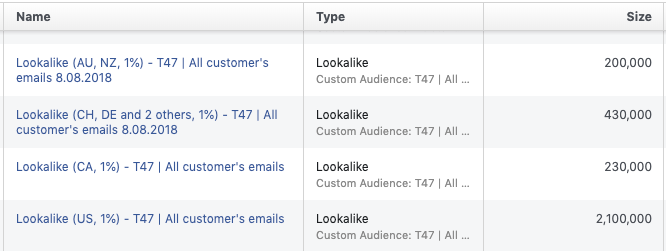
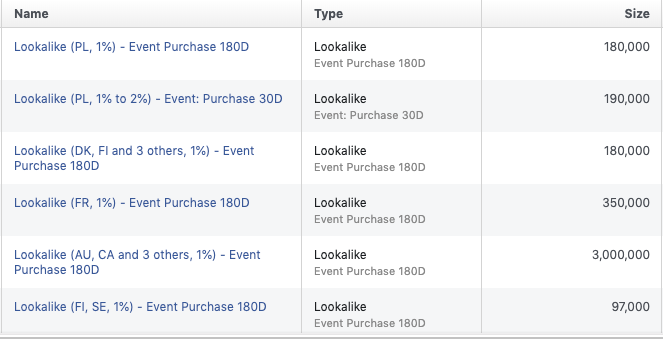
3. Narrow by Interests or Lookalikes
Precise targeting can be achieved by using combinations of interests or putting interests together with an audience of lookalikes. To find your perfect audience, pick broader interests and make 2-3 layers (use “must also match”), or narrow a lookalike audience by adding interests. For example:
Don’t blow your entire advertising budget on this section of the funnel. As a guide, we spend no more than 50% of the whole media buying budget on content distribution at this Top stage.
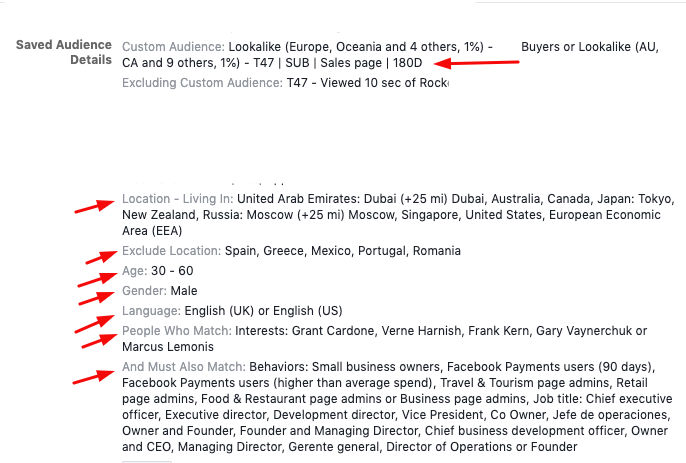
Summary: Top of the Funnel
- Pick appropriate channels for your product and audience
- Warm your audience up with the paid promotion of educational content
- Experiment with different targeting variations
- Spend roughly half your media buying budget warming up that cold audience
Middle of the Funnel
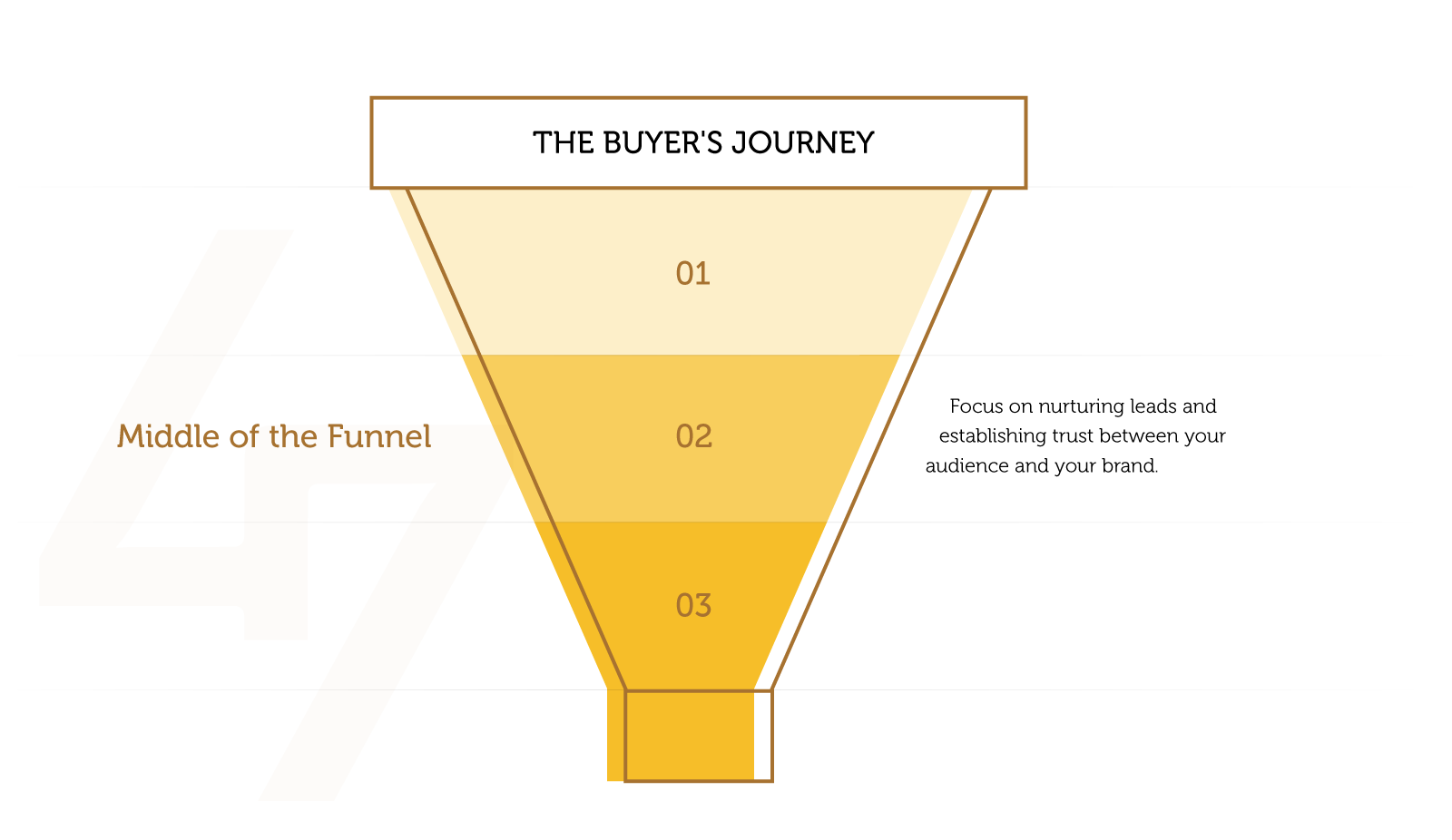
The middle of the funnel is the point where you need to focus on nurturing leads, building relationships, and establishing trust between your (now warm) audience and your brand.
Your pre-warmed audience is made up of:
- Viewers of your video content (25, 50, 75, 90% and 10-second viewers)
- Blog visitors
- Visitors of specific pages on your website
- People who engaged with your Page on Facebook and Instagram feeds
- Subscribers to your YouTube channel
- Facebook and Instagram Page fans
It’s time to use remarketing in the form of gated content to deepen the connections you’ve just made. This is the point at which we advertisers can flex our creative muscles and really have some fun.
As the name suggests, there is a gate to enter and explore the content. The viewer has to pay with their personal data (typically their email address) to be able to obtain valuable content. This type of content must be of the highest quality.
There is no one-size-fits-all gated campaign but here are a few great ways to acquire leads and start showing off your product:
1. Freemium, Free Trial or Demo
Letting your audience try before they buy is a great way to build their trust and show them how effective your product is. The initial cost per acquisition may be high but in our experience, the conversion rate to the final product is usually more than 35%, so it’s definitely worth a try. Just remember that once the testing period ends, the cost per free trial or demo user needs to be at least 3-5 times cheaper than your actual cost per acquisition of the final product.
2. Lead Generation
- Webinar – Explain how your product solves explicitly a problem that’s a pain point for your audience in a webinar. Pay attention to the conversion rate from webinar page visits to the webinar sign-up and the cost per webinar sign-up. Plan your budget to attract as many people as possible but bear in mind that the attendance rate for your webinar will be around 20-40%.
- Quiz – Hook users’ attention with interesting interactive content without breaking the bank by creating a quiz. They typically cost 2-4 times more than your cost per click, but you can achieve costs of <$1 (less than $1) per lead with a particularly well-crafted and properly targeted set of questions.
- Ebook – Educate your audience and present yourself as an expert in your field with a short and well-written eBook. Keep the cost per download lower than 2-4x your CPC.
- Challenge – Build your authority and generate brand loyalty by setting your audience a challenge. Sign-up costs are usually as little as $3-5. Bear in mind that even if you make your challenge pretty straightforward and achievable, only 15-30% of starters will make it through to the end.
When planning your content, whether you set a challenge, make a quiz, or deliver a webinar, keep it simple and accessible and emphasize its value. A really difficult challenge that drags on for months is not going to be popular.
Your audience won’t give up their email addresses for just any old piece of content. To coax them into making the exchange your content needs to use this trick:
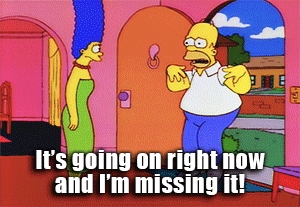
Your content must carry with it an air of scarcity that will make users experience FOMO (The Fear Of Missing Out) and want to engage with your ad. This can be done by making your content available for a limited period of time. Up the tension by issuing regular countdowns to the deadline, reminding people they have 5 days to register, then 24 hours.
Summary: Middle of the Funnel
- Remarket to your warm audience with gated content
- Keep your gated content simple, valuable, and accessible
- Create demand for your content by limiting its availability
Bottom of the Funnel
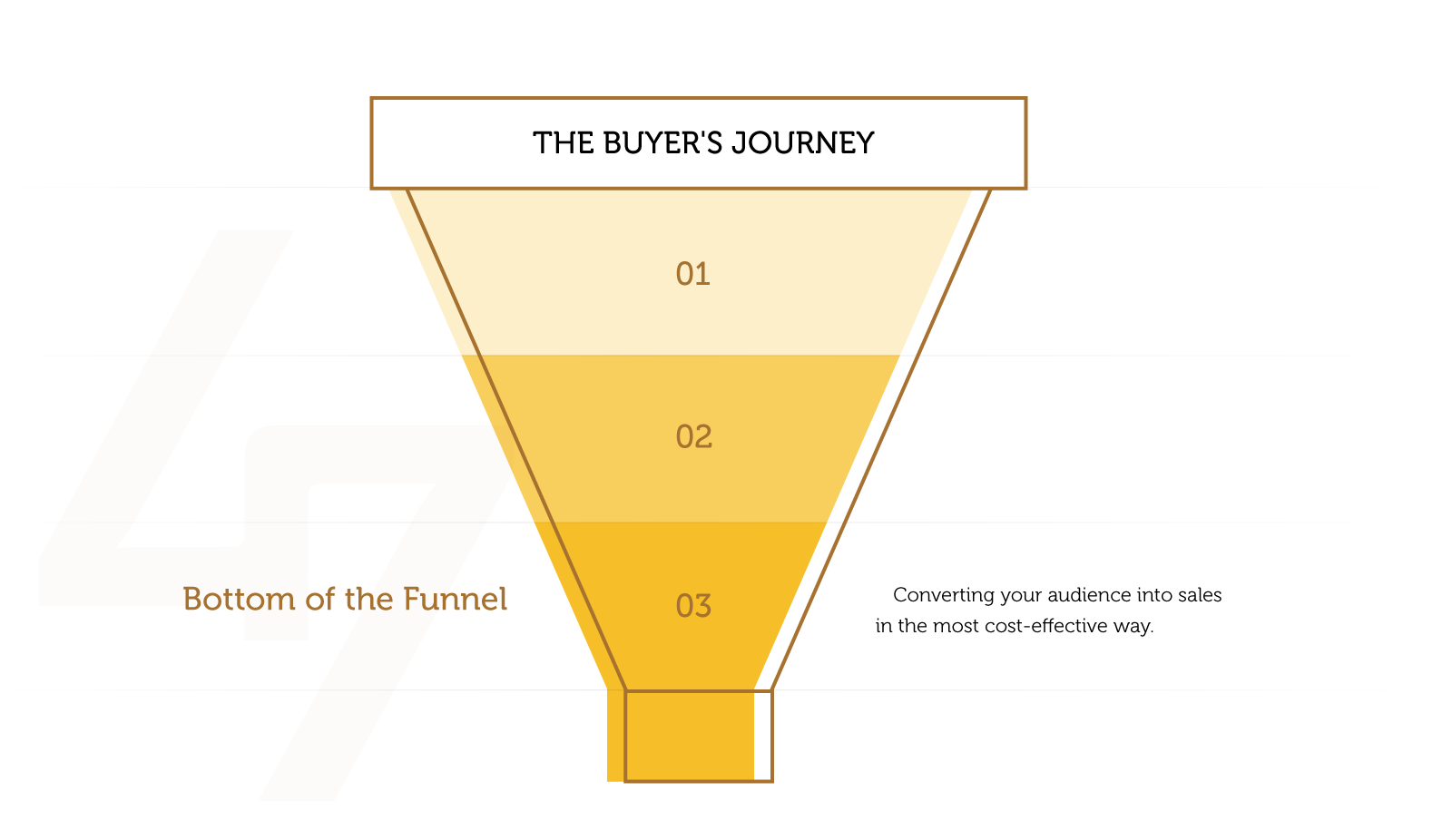
With a paid traffic funnel, you’ve gathered an audience, warmed them up, and worked to earn their trust. Now it’s time to convert all that hard work into actual sales in the most cost-effective way possible.
The first thing you need to do in the Bottom stage is segment and test your audience so you can:
- Show different ads (creatives, copies) to each strand of your audience (product page visitors, checkout visitors, etc.).
- Overcome objections that may differ between audiences. For example, one audience segment who abandoned a product in the cart may make a purchase if given a one-off discount.
- Have a separate budget for each audience, allocating the most funds to the best-performing audiences.
- Track results more effectively. Lumping remarketing audiences together makes it impossible to tell which one is bringing results and for which price.
A good way to segment your remarketing audiences is to divide them into different time periods based on when a user performed the desired action (i.e. added to cart). For example:
- 0-3 days OR 0-7 days
- 7-14 days (include 14 days, exclude 7)
- 14-30 days (include 30 days, exclude 14)
- 30-90 days (include 90 days, exclude 30
Next, group the different segments of your audience based on how they responded. For example:
- Opted-in to trial purchases/demo product users/freemium users
- Added product to cart
- Viewed content of the product
- Viewed testimonials
- Reacted to leads i.e. downloaded e-book, registered for a webinar, took a quiz
- Participated in a challenge (can be divided into those who finished and those who didn’t)
- Engaged with the website (based on time spent on the page)
Now comes the most complicated part because some users who are engaged, and who have even consumed your content in the first two stages, still might not be ready to buy your product. This will happen even if your content is brilliant, and your product is life-changing and marvelous.
Don’t worry about it. It’s maddening, but it’s also 100% normal.
In fact, we believe deep remarketing to be the most important part of getting conversions and positive ROAS out of your sales campaign. Here’s how to go about it:
- Your ads must overcome common objections your audience may have such as:
- I don’t have enough time
- I don’t want to spend money on it
- It won’t work for me
- I don’t believe you
- I don’t need it
- Combine scarcity with a small discount and offer a time-limited 10% discount to people who went to the checkout before absconding.
- Boost your credibility and earn more trust with testimonials. Video is the most effective format to use for this, but even a carousel with clients’ photos and reviews can do wonders for your ad revenue.
Summary: Bottom of the Funnel
- Segment your audience
- Run tests to find out what adverts work best with each different group
- Overcome objections with your copy & ad creatives
- Make people finish the purchase by showing them testimonials and time-limited discounts
Monitor And Tweak
Before you run off and build your first funnel, here are a few tips on how to keep your budget under control and how to make sure the contents of your funnel are the best that they can be.
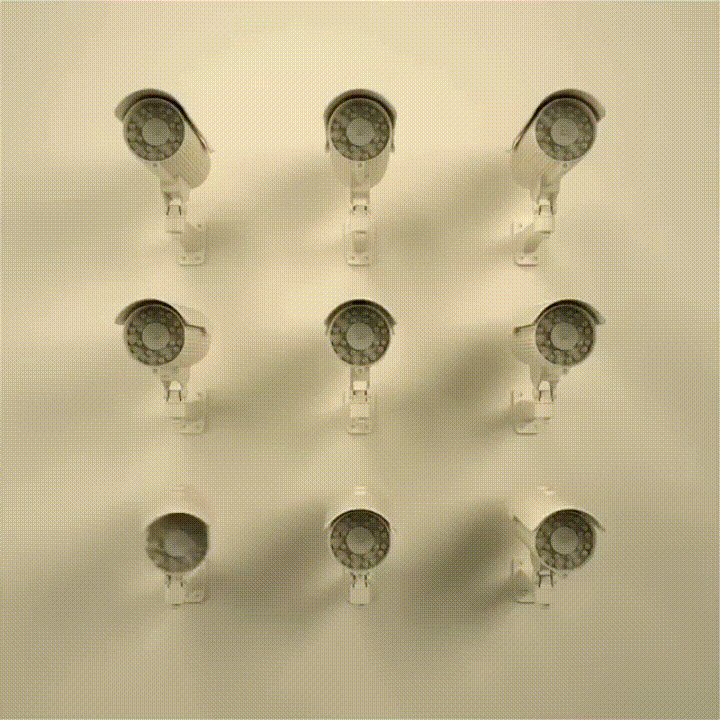
For your funnel to be financially viable and sustainable the lifetime value of a customer must equal three times the customer acquisition cost (LTV=3*CAC).
Once your funnel is up and running you must monitor and fine-tune it until it becomes a sleek and glorious piece of digital sales and marketing poetry. Create a realistic and actionable list of KPIs for each stage of the funnel to act as your guide.
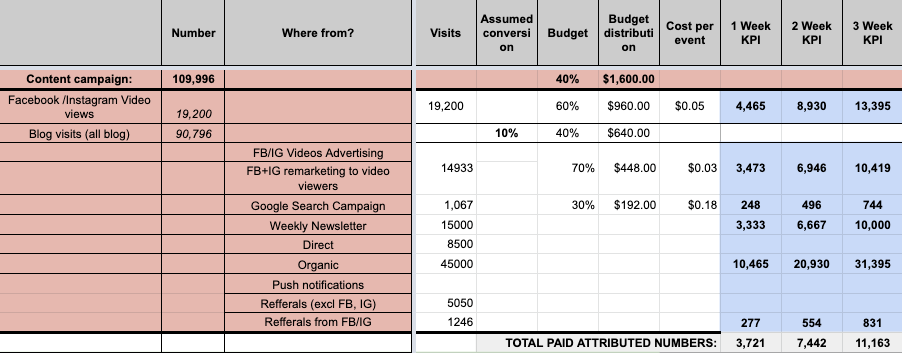
Your list should look something like this:
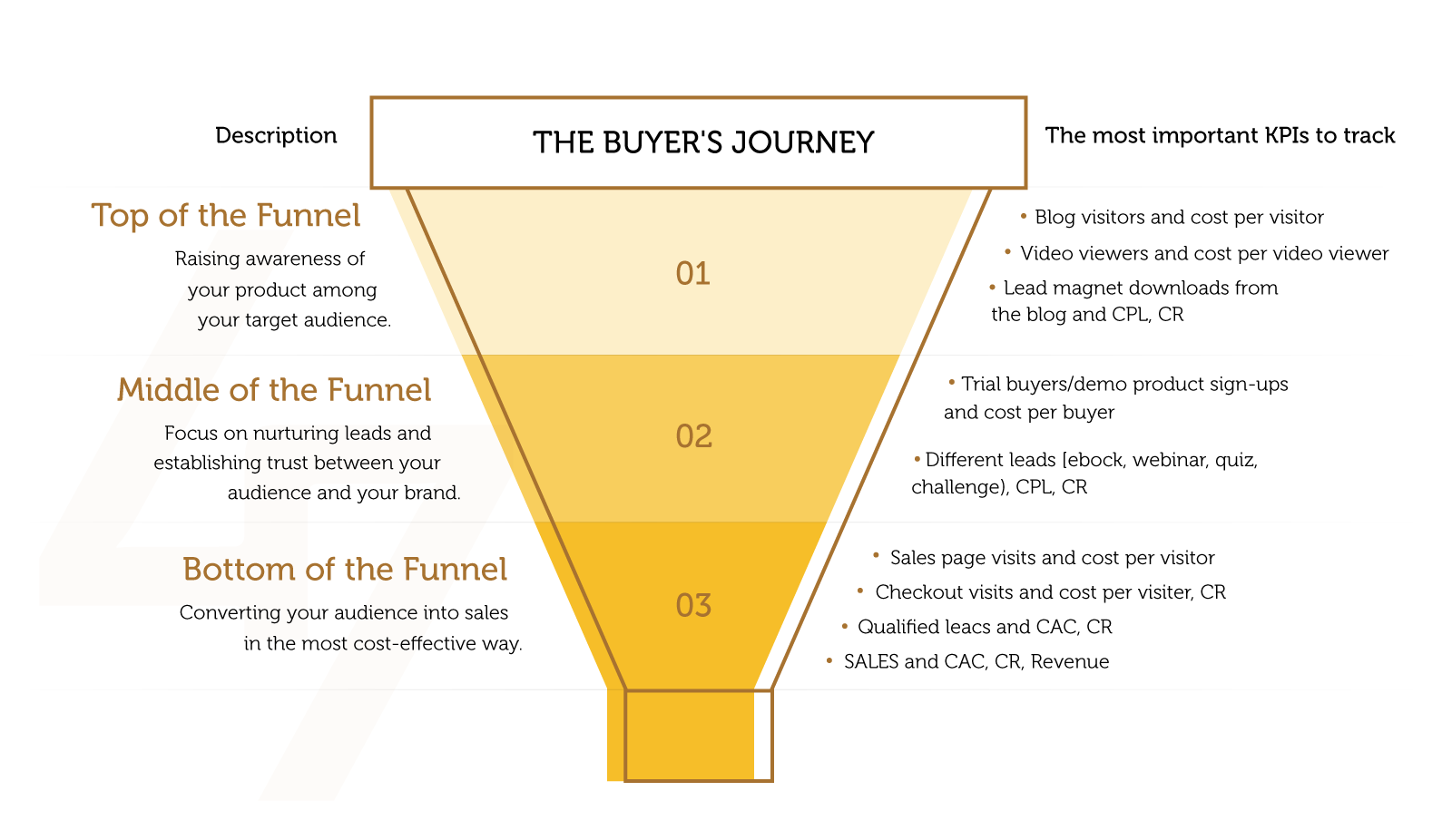
Top of the funnel KPIs:
- Blog visitors and cost per visitor
- Video viewers and cost per video viewer
- Lead magnet downloads from the blog and CPL, CR
Middle of the funnel KPIs:
- Trial buyers/demo product sign-ups and cost per buyer, CR
- Different leads (ebook, webinar, quiz, challenge), CPL, CR
Bottom of the funnel KPIs:
- Sales page visits and cost per visitor
- Checkout visits and cost per visitor, CR
- Qualified leads and CAC, CR
- SALES and CAC, CR, Revenue
It might seem obvious for any paid traffic specialist but you need to make sure you are meeting your KPIs at each stage of the funnel. Monitor what’s going on and create a weekly report of the most important metrics. You’ll soon start to see what’s working and what should, like a teenage diary, be thrown into the back of the cupboard and never used again.
As you can see, Funnel 3.0 is a wonderfully smart and creative way to approach advertising in 2021.
By warming an audience with educational content, deepening their connection to a brand with gated content, and then researching what they respond to (while happily remarketing all the way), paid traffic specialists can make their product stand out among the many.
Journeying through the funnel will make your audience feel seen and understood, and by the time they make a purchase, they will consider themselves to be part of a community bonded by the solution your product provides.
The beauty of this approach is that it can be just as effective for advertisers working for a small company on a tight budget as it is for advertisers working at a huge multinational with stacks of cash at their disposal.
With the funnel, advertising specialists never have to be limited to boring spreadsheets again.
